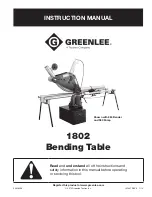
9
Application Notes
Weep Control Fail Safe Wiring.
When it is winter and your carwash looses power from a storm, you want the system to behave in a manner that
assumes temperatures are below freezing. Failure to do so could result in serious damage. For this reason, normally
open solenoid valves are used so that if power is lost, by default your equipment will be protected from freezing
damage. This means that in warm weather this solenoid must be activated to prevent weeping. For similar fail safe
reasons, if you loose power only to Zolar, or if the overload protection fuse in Zolar is blown, or if for some reason
Zolar should fail, then you want the failed state of the unit to default to the same electrical state as if temperatures
were currently freezing. This means that the N.O. relay contacts should be used to drive the N.O. solenoid valve, and
it is also the reason the duty cycle graph shows that the relay is Off when it is cold and On when it is warm.
Weep Control Multiple Probe Sensing.
The temperature at opposite ends of your carwash may receive sunlight at different parts of the day, causing one side
to be warmer in the morning and the other to be warmer in the afternoon. It is often difficult to find a single location
for mounting the Z440TP Temperature Probe that can provide satisfactory safety from freezing under varying
sunlight conditions. Zolar provides you with the option of using two Z440TP Temperature Probes to solve this
problem. When configured for using two Temperature Probes for the Weep function, Zolar will use the lower of the
two temperatures to control the Weep Output duty factor. Zolar will automatically know if the second Temperature
Probe is to be used with the Weep Output or the Auxiliary Output by how you have configured the Auxiliary Output
through the front panel Configuration Menu. If the Auxiliary Output is configured to be controlled by either
temperature or ambient light, then the second Sensor Input will be associated with the Auxiliary Output control.
However, if you configure the Auxiliary output for control by time of day, then Zolar will use the second Sensor
Input in the dual Temperature Probe configuration for the Weep Output. (Note: If the Auxiliary Output is configured
for control by time of day and a 2
nd
Temperature Probe is not connected, Zolar will ignore the 2
nd
Sensor Input.)
Ambient Light Probe Notes.
The Z440LP Light Probe consists of a light sensor encapsulated in a light diffusing high density polyethylene tube
encapsulated with silicone sealant. It has fairly omnidirectional sensing characteristics to average light intensity over
its entire field of view. The light sensor has a filter for blocking visible light but passing infrared light. This allows
the sensor to easily detect sunlight, which contains a significant amount of infrared light, and ignore light from most
high powered outdoor lights, such as metal halide, mercury vapor, low pressure sodium and fluorescent lamps, all of
which emit virtually no infrared light. However,
incandescent and tungsten halogen lamps do contain a great
deal of infrared light and should not be used near the Z440LP Light Probe.
This is important in applications
where the light sensor is being used to control exterior lighting and we do not want these light sources to interfere
with proper detection of the sunlight intensity.
Typically, ambient light levels are measured in foot-candles (ft.cdl.) or alternatively in Lux. The sun produces about
8,500 ft.cdl. or 90,000 Lux of light intensity at noon on a clear summer day. Rather than try to remember these
confusing terms and numbers, Zolar expresses light intensity as a percent of full sunlight brightness. So, a reading of
33.3% indicates the Light Probe is sensing 1/3 of full sunlight intensity.
Experimental data shows that on a sunny day, the light intensity under the eves on the sunny side of a building is
about 10% brightness, under the eves on the shady side of a building is about 5% brightness, and inside a self-serve
carwash bay is also about 5% brightness. There is satisfactory light for washing a car down to light levels in the
range of 0.5% to 1.0%. The default value set at the factory is 0.7%, but you may adjust this threshold using the
Menu on the front panel.
IDX Inc, 400 W. Cedar St., El Dorado, AR 71730 800-643-1109
www.idxinc.com



























